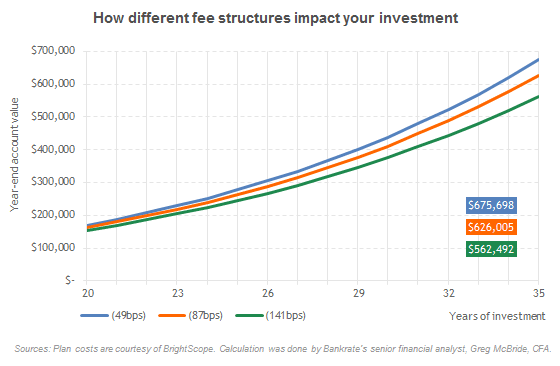Student Aid Secrets Minimizing the Impact of Assets
Post on: 6 Июль, 2015 No Comment

Download the free guide:
Financial aid formulas assess a portion of student and parent assets. In some cases, the family may be able to increase eligibility for need-based aid by repositioning assets, paying off debt and accelerating necessary expenses.
Reportable vs. Non-Reportable Assets and Debts
Some types of assets are reported on the Free Application for Federal Student Aid (FAFSA) and some are not.
Reportable assets include cash, bank and brokerage accounts, certificates of deposit (CDs), stocks, bonds, mutual funds, money market accounts, commodities, precious metals, the vested portions of stock options and restricted stock units, exchange-traded funds (ETF), hedge funds, real estate investment trusts (REIT), real estate (other than the family’s principal place of residence, the family home), loans held, installment contracts, trust funds, private equity and other investments. Custodial accounts, including Uniform Gift to Minors Act (UGMA) and Uniform Transfer to Minors Act (UTMA), are reported as assets of the account owner, not the custodian. College savings plans, include 529 college savings plans, prepaid tuition plans and Coverdell education savings accounts, are reported as an asset of the account owner, not the beneficiary.
Non-reportable assets include:
- The net worth of the family’s principal place of residence (the family home)
- The net worth of a family farm (if it is the family’s principal place of residence and the student and/or parents materially participate in the farming operation)
- Any small businesses owned and controlled by the family (less than 100 full-time equivalent employees)
- Qualified retirement plans such as 401(k) plans, 403(b) plans, pension plans, annuities, traditional IRAs, Roth IRAs, Keogh, SEP and SIMPLE plans
- Life insurance policies, including cash value and whole life insurance policies
- Personal possessions, such as clothing, furniture, books, cars, boats, computer equipment and software, television and stereo equipment, music collections, jewelry, coin, stamp, art and wine collections

Some of these assets are reported on the CSS/Financial Aid PROFILE, including the net worth of the family home, the family farm and small businesses owned by the student or parents.
The net worth of a reportable asset is reduced by any debts secured by the asset. For example, the net worth of a brokerage account is reduced by the outstanding balance of a margin loan against the brokerage account. The net worth of a vacation home is reduced by a mortgage against the vacation home, but not a mortgage secured by the family’s principal place of residence. Other forms of consumer debt, such as credit cards, auto loans and unsecured loans, are not considered on the FAFSA. An auto loan may be secured by an automobile, but is not reported on the FAFSA because the automobile is not a reportable asset.
Only assets in the student’s name, the parent’s name (if the student is a dependent student) or the name of the students spouse (if the student is married) are reported on the FAFSA. Assets held by others, such as a grandparent, aunt, uncle, cousin or sibling, are not reported on the FAFSA but may be reported on the PROFILE. Assets in the name of a sibling will be assessed eventually, when the sibling enrolls in college. However, money in 529 college savings plans, prepaid tuition plans and Coverdell education savings accounts owned by a parent must be reported as a parent asset on the FAFSA, even if the beneficiary is a sibling.
Contributions to and distributions from a non-reportable asset, however, are reported as income (taxable or untaxed) on the FAFSA, if the student, parents or spouse are the source of the contributions or recipient of the distributions.
One strategy is to shift assets from reportable assets to non-reportable assets and not vice versa. Examples of this strategy include:
- Maximizing retirement plan contributions and minimizing retirement plan distributions. Note that contributions to a qualified retirement plan will still be counted as untaxed income on the FAFSA, even though the money will be sheltered as an asset .
- Paying down consumer debt, such as credit card debt and auto loans, as well as the mortgage on the family’s principal place of residence. Only debt that is secured by a reportable asset will reduce the net worth of the asset on the FAFSA. The FAFSA does not offset income or assets by unsecured consumer debt, such as credit card debt, and by debt secured by a non-reportable asset, such as a mortgage on the family’s principal place of residence. So using extra money to pay down debt may effectively make the money disappear on the FAFSA. Paying down debt can also save money, if the interest rate charged on the debt is higher than the interest rate earned on the savings. For example, if a student owes $1,000 on a credit card charging 14% interest and is earning 1% interest on $1,000 in a savings account, using the savings to pay off the credit card balance will save $130 in interest annually. (Note that paying down the mortgage on the family’s principal place of residence will not increase eligibility for need-based aid on the PROFILE unless the net worth of the home exceeds 2-3 times the parents’ income.)
- Small businesses owned and controlled by the family could retain part of the salaries normally paid to the student and parents, thereby, reducing income without increasing reportable assets. The business should be incorporated as a C corporation, as opposed to a pass-through entity like an S corporation or sole proprietorship, so that the retained income is not reported on the family’s federal income tax returns. The family could also shift ownership of assets to the business to shelter the assets on the FAFSA.
- Moving assets into the name of a sibling, grandparent or other relative.
- Avoiding home equity loans (as opposed to a home equity line of credit), because the unspent proceeds of a home equity loan must be reported as an asset on the FAFSA. The loan proceeds are not reduced by the amount of the debt, because the debt is secured by the family home, a non-reportable asset, and not by the cash proceeds.
Shifting assets to life insurance policies is not recommended, as the sales charges are high and the returns on investment are low.
Annuities may be a reasonable option for families needing to shelter significant assets. However, most families with enough assets to eliminate eligibility for need-based aid also have enough income to lose aid eligibility even if all assets were ignored.
There are a few issues potentially associated with sheltering assets:
- Certain assets that are non-reportable on the FAFSA are reportable on the PROFILE. Using such non-reportable assets to shelter assets on the FAFSA will not be effective at sheltering the assets on the PROFILE. Examples include small businesses owned and controlled by the family, the family home and a family farm. All college savings plans which name the student as a beneficiary are reported as assets on the PROFILE, even if the accounts are owned by someone other than the student or the student’s parents.
- Investments in some non-reportable assets must be made in cash, forcing the family to sell the investments before shifting the funds into a non-reportable asset. This may result in capital gains, which might be reportable as income on the FAFSA and PROFILE, depending on the timing.
- Income and distributions from a non-reportable asset are reported as taxable or untaxed income on the FAFSA and PROFILE. For example, grandparent-owned 529 plans are not reported as an asset on the FAFSA, but any distributions from a grandparent-owned 529 plan will be reported as untaxed income to the beneficiary (the student) on the subsequent year’s FAFSA. This can have a severe impact on eligibility for need-based aid, as student taxable and untaxable income can reduce aid by up to half of the amount of the distribution. Workarounds include waiting until the child’s senior year in college to take a distribution (assuming that the child will not be enrolling in graduate or professional school) and changing the account owner to the student or the student’s parents. (Distributions from a college savings plan owned by the student or parent are ignored on the FAFSA. Such college savings plans are reported as parent assets on the FAFSA, but the reduction in aid eligibility is minimal.)
- Before paying down debt, the parents should save 3-6 months of salary in an emergency fund. The emergency fund might be used to cover living expenses if either or both parents lose their jobs or to cover other unforeseen expenses, such as home and car repairs. Some people recommend saving 6-12 months of salary in the emergency fund because the average time between jobs increased during the most recent economic downturn.
Accelerate Necessary Expenses
If the family needs a new car or the house needs a new roof or other major repairs, it may be better to spend the money on these necessary expenses before the children enroll in college than a few years later. Similarly, if the child needs a SAT or ACT test prep class, a dorm refrigerator and microwave oven, a computer for school or a car to commute to college, pay for it with the child’s money before filing the FAFSA. (Note, however, that college students may be able to qualify for a discount on computer equipment once they enroll.)
Cars, computers, furniture, books, boats, appliances, clothing and other personal property are not reported as assets on the FAFSA. Home maintenance expenses are also not reported as assets on the FAFSA, since the net worth of the family’s principal place of residence is not reported as an asset. If the parents are planning on buying these items anyway, accelerating their purchase may reduce reportable assets, thereby, decreasing the expected family contribution (EFC) and increasing eligibility for need-based aid.
The family can also reduce reportable assets by making a charitable contribution.
This is an advertisement














